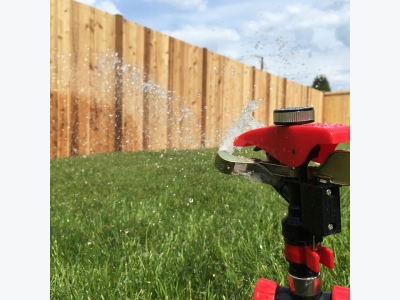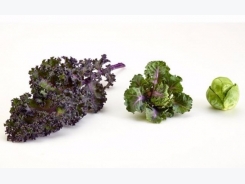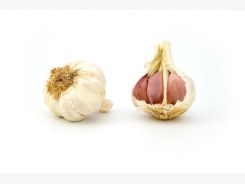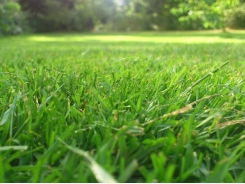Lawn Watering

When it comes to grass, different types have different needs, particularly in terms of water. But climate and weather also play a role when it comes to the watering needs of lawn.
Some lawns need more than an inch of water every week to actively grow and stay green.
Generally cool-season grasses like Kentucky bluegrass and fescues need more water than a tough warm-season grass like zoysia. At the same time Kentucky bluegrass needs about double what most of the fescues need. But you can’t simply choose a grass based on its water needs. You need to choose a variety that is well adapted to the region in which you live. So unless you live in the upper or central south, or in Florida, on the Gulf Coast or on Hawaii, zoysia won’t be an option.
How to know when to water your lawn
All lawns need some water to keep them actively growing. But worldwide water shortages have taught us that they don’t need as much water as some of us think.
By the same token, we can’t rely on Mother Nature to constantly keep the lawn watered. If temperatures are consistently high and it doesn’t rain over periods of time, and you don’t do your own watering, the grass will start to wilt and eventually turn completely brown. If you walk over dry grass you will normally hear it crunch underfoot and you may even see your footprints in the withering lawn. Then you know it’s time to water.
At the same time, most grasses become dormant at some time or another, particularly in times of drought. Also warm-season grasses thrive in hot conditions but they regularly become a dormant brown color in winter. This doesn’t mean that the grass is dead or dying. In normal dormancy, the plant is alive under the soil, but it isn’t actively growing. Unless there are water restrictions, and you aren’t allowed to water your garden, a thorough soaking over a relatively short period of time will generate new growth, and new leaves will start to push out of the earth.
If possible, dormant lawns should be covered with at least an inch of water once or twice a month to prevent it from dying. If sections of grass do die during a drought, it is often possible to reseed these areas once water is more plentiful again.
If you learn to know what you lawn looks like in good times, you will quickly identify its need for water. Just remember that green lawn needs more water to stay green than dormant grass needs to stay alive.
If you live in a high rainfall area, avoid watering your lawn when the soil is obviously already moist – even if it looks as if the grass leaves are wilting. Chances are you have identified wet wilt, which happens when the root system of the grass can’t cope with all the water because its root zone is being starved of oxygen.
The other aspect of knowing when to water relates to the time of day. Usually it is best to water in the early morning, and to avoid watering at midday or when it is very hot and windy.
How to water your lawn
You can water your lawn manually, with a garden hose, or install some sort of irrigation system. Your choice will depend on your needs as well as your budget.
If you use a garden hose, you can stand holding the hose while you water (which is what you would normally have to do during periods of watering restrictions), or use a sprinkler fitting which you then manually move from place to place to ensure the whole lawn gets water.
Then there are many different lawn irrigation systems available, that are permanently installed. These can generally be divided into two types, sprinklers or drip irrigation, either of which may be automatic or manual. Automatic systems may be adjusted so that they go on and off at certain times of the day or night, while manual systems must be turned on when you want them to operate.
Irrigation systems
The attraction of having an irrigation system installed is avoiding the need to lug a garden hose around the garden whenever you need to water the lawn and other plants.
Whatever type of system you opt for, it will have a series of pipes and sprayers, or in the case of drip irrigation, drip watering devices. The pipes form the skeleton of any irrigation system. Their size will be determined by the pressure of the water supplied to your property – generally between 30 and 50 psi (pounds per square inch) or 2 to 3.5 bars – as well as the water flow, which is literally how much water flows through the pipes – generally 10 gallons a minute. These are ideal parameters for most sprinkler systems, but if your water pressure is any lower than this, the spray won’t cover the intended area. If it is too high, you will need to have a pressure regulator installed.
Sprinkler systems have been around for a long time and they are the most common type of domestic irrigation system in use. They come with a wide variety of sized sprinklers that also have adjustable spray patterns. They use more water than drip irrigation systems, but are ideal for lawns, which drip systems aren’t.
The pipes that are used for sprinkler systems are usually buried, with just the risers, or pop-up units (which are more commonly used in lawns) positioned above the ground. Remember that you won’t be able to accurately assess how many sprayers will work properly on each line of pipe, or how many lines you will need in total, unless you know what the pressure and flow of your water is.
Drip irrigation (sometimes referred to as subsurface drip irrigation) is a very economical irrigation system that delivers small quantities of water to plants close to their roots. Instead of flowing through the garden, or spraying over it, this system literally drips a small, even amount of low pressure water into the soil exactly where you need it. Very little water evaporates, and because the water is dripping into the ground, very little runs off the surface. Drip irrigation has become very popular over the past few years because it helps us to conserve and save water.
It is not most commonly used to water flower beds, shrubs, planter boxes and vegetable gardens.
Types of sprinklers
There is a reasonably wide range of hose-end sprinklers available, some of which are designed specifically for small gardens. The type with a rotary head that shoots water out using a pulsating action is probably the best type for watering large areas. The type that has a traveling action is ideal for large, established lawns, but it can only be used on level ground.
There are three basic types of sprinkler for irrigation systems:
- fixed spray,
- geared rotary (which is quiet), and
- impact-rotary (that tends to be noisy).
All are available in a form that sits at a fixed height and the type that pops up out of the ground before it starts operating.
Fixed spray sprinklers have nozzles that turn fully, half way or just do a quarter turn, and they will cover areas from 5 to 15 feet. Rotary sprinklers can move water much further, from 15 to 50 feet, depending on the particular model.
There are four different types of drip watering device:
- emitters that simply drip onto the surface,
- emitter lines that comprise tubing that has a series of emitters in it,
- misters that create a very fine spray over plants, and
- microsprays that cover larger areas.
Here's more information on sprinkler systems and lawn care.
Tips for saving water when watering lawn
- Don’t over-water your lawn. Generally a lawn needs watering no more than once a week in summer and twice a month in winter.
- Don’t water lawns for about two weeks after heavy rain.
- Water early in the morning to minimize evaporation.
- Don’t water in windy weather because the wind speeds up evaporation.
- Only water the lawn and not adjacent paved areas.
- Minimize fertilization of your lawn because this generally increases the need to water.
- Generally longer grass needs to be watered less frequently than short-clipped lawns, because it promotes water retention.
- When you water, put a clean, empty tuna can on the lawn. Once it fills up you have watered enough!
Có thể bạn quan tâm
Phần mềm

Phối trộn thức ăn chăn nuôi

Pha dung dịch thủy canh

Định mức cho tôm ăn

Phối trộn phân bón NPK

Xác định tỷ lệ tôm sống

Chuyển đổi đơn vị phân bón

Xác định công suất sục khí

Chuyển đổi đơn vị tôm

Tính diện tích nhà kính

Tính thể tích ao hồ




 Organic Weed Control
Organic Weed Control  Lawn Mowing
Lawn Mowing